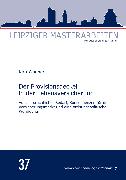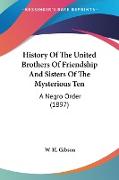The Wizard of Warsaw
BücherAngebote / Angebote:
Szymon Winawer was a world top-10 player in the 1870s and 1880s, dueling with such titans as Steinitz, Lasker, Anderssen, Marshall, Chigorin, Zukertort, Louis Paulsen, Janowski, Maroczy, Tarrasch and others, and defeating most of the leading players of his time. He won or took prizes in major international tournaments, including Paris 1867 (second, behind Kolisch and above Steinitz), Leipzig 1877 (fourth, behind Paulsen, Anderssen and Zukertort), Paris 1878 (first equal with Zukertort, though he lost the play-off), Berlin 1881 (third equal with Chigorin, behind Blackburne and Zukertort), Vienna 1882 (first equal with Steinitz), and Nuremberg 1883 (first, ahead of Blackburne). Winawer was a proponent of fighting chess, regularly deploying the King's Gambit and Ruy Lopez as white, demonstrating winning combinations as well as positional sacrifices and endgame precision. He attacked the castled king with his h-pawn 150 years before Alpha-Zero. He displayed technique using Horowitz bishops and opening the g-file. At the same time, we see in the book that he also played solid positional chess. Moreover, several opening ideas are named after him, including the popular Winawer Variation of the French Defense. The Warsaw-born player was not a chess professional and never published any annotated games of his own, but some of his concepts, both in the opening and in the middlegame, are still valid in the 21st century. Indeed, many strategic ideas (blockade, exploiting doubled pawns, maneuvering) described in the works of Nimzowitsch and other hypermodernists can be found, in embryonic form, in the games of Winawer played half a century earlier.In the first half of this biographical work, Warsaw-based chess historian Tomasz Lissowski, who has co-written books on Kieseritzky and Zukertort among others, portrays Winawer's life and his sporting achievements in the context of the epoch. This book delivers not only a description of the evolution of chess in Poland in the nineteenth century, but a sense through the prism of chess of the political and social history of Poland and the Austro-Hungarian, German and Russian empires in a period of war and upheaval. It is illustrated by many historical photos from the period.In the second half of this book, International Master Grigory Bogdanovich paints Winawer's creative portrait, as well as examining the legacy that this ingenious improviser left to chess culture. The book contains in total 132 annotated instructive games and fragments of Winawer and his contemporaries.
Folgt in ca. 10 Arbeitstagen




